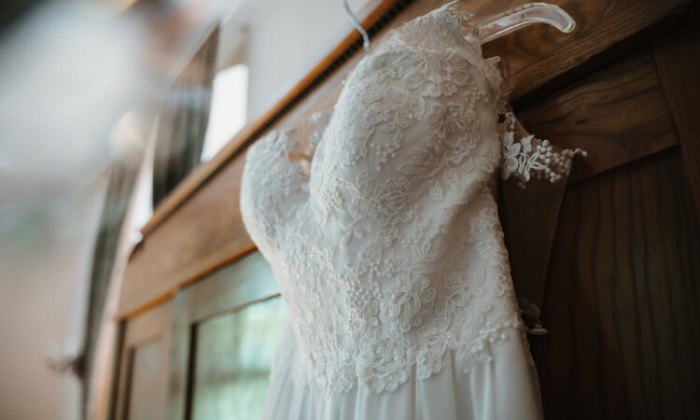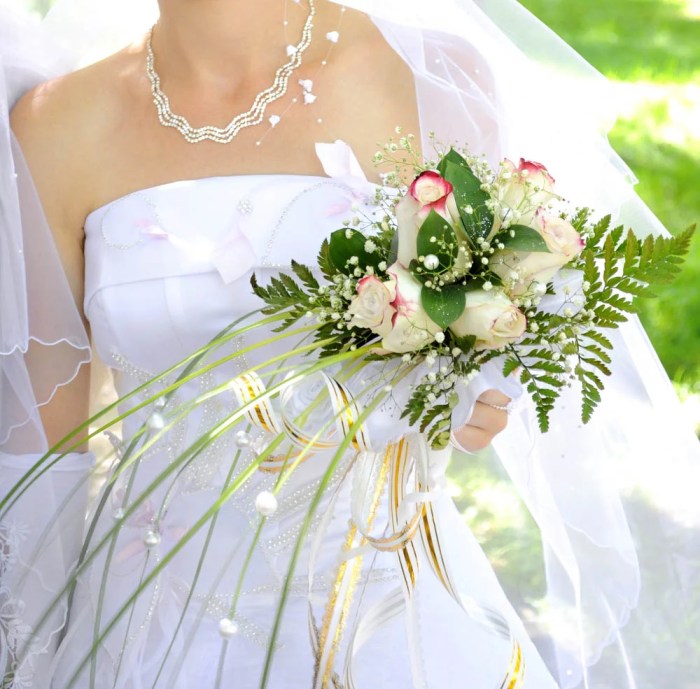Understanding Wedding Dress Fabrics
How to preserve wedding dress – The fabric of your wedding dress significantly impacts its preservation. Different materials require specific care to maintain their beauty and integrity over time. Understanding these differences is crucial for successful long-term preservation.
Common Wedding Dress Fabrics and Their Preservation Needs
Wedding dresses are crafted from a variety of fabrics, each possessing unique properties affecting their preservation. Silk, for example, is a luxurious but delicate fiber prone to damage, while satin and taffeta are more durable. Lace, often used as embellishment, requires extra gentle handling.
Comparing Delicate and Durable Fabrics

Source: embassycleaners.com
Delicate fabrics like silk and lace demand meticulous care during cleaning and storage to prevent damage. Their intricate weaves and delicate fibers are susceptible to tearing and discoloration. In contrast, more robust fabrics such as satin and taffeta are generally more resistant to damage, although they still benefit from proper care.
Fabric Preservation Comparison Chart
| Fabric Type | Cleaning Method | Storage Requirements | Potential Issues |
|---|---|---|---|
| Silk | Professional wet cleaning recommended | Acid-free box, cool, dark, dry environment | Yellowing, discoloration, tearing |
| Lace | Professional dry cleaning or hand washing (depending on type of lace) | Acid-free box, cool, dark, dry environment, avoid pressure | Snagging, tearing, discoloration |
| Satin | Professional dry cleaning generally suitable | Acid-free box or garment bag, cool, dark, dry environment | Creasing, discoloration |
| Taffeta | Professional dry cleaning generally suitable | Acid-free box or garment bag, cool, dark, dry environment | Creasing, minor discoloration |
| Organza | Professional dry cleaning preferred | Acid-free box, cool, dark, dry environment, avoid pressure | Tearing, wrinkling |
Cleaning Your Wedding Dress
Professional cleaning is highly recommended for preserving your wedding dress. Improper cleaning can cause irreversible damage. The cleaning method should be tailored to the specific fabric of your dress.
Professional Wedding Dress Cleaning Process
A professional cleaner will typically begin with a pre-treatment process to address any stains or soil. This might involve spot cleaning delicate areas or applying specialized stain removers. The dress will then be cleaned using an appropriate method – either dry cleaning or wet cleaning, depending on the fabric. Finally, the dress will be carefully pressed and prepared for storage.
Dry Cleaning vs. Wet Cleaning
Dry cleaning uses solvents to clean the garment without water, which is generally preferred for delicate fabrics. Wet cleaning involves washing the dress with water and specialized detergents, often better suited for certain stains or fabrics. The choice depends heavily on the dress’s material and the presence of any embellishments.
Packaging Your Dress for Professional Cleaning
To protect your dress during transportation, wrap it carefully in acid-free tissue paper. Place it in a breathable garment bag, avoiding plastic which can trap moisture. Clearly label the bag with any special instructions or concerns about delicate embellishments.
Proper wedding dress preservation is crucial for safeguarding this cherished memento. The delicate fabrics and intricate designs, such as those often found on a bishop sleeve wedding dress , require specialized cleaning and storage. Professional cleaning is highly recommended before storing your gown in an acid-free box, away from direct sunlight and moisture, to ensure its longevity and beauty for years to come.
Proper Storage Techniques
Proper storage is essential for preserving your wedding dress. The environment plays a significant role in preventing damage from moisture, light, and pests.
Ideal Storage Environment and Solutions
Store your dress in a cool, dark, and dry place. Avoid attics, basements, and areas prone to temperature fluctuations or humidity. Acid-free boxes provide excellent protection, while garment bags offer a more compact option. Climate-controlled storage facilities offer the most comprehensive protection but incur additional costs.
Storage Solution Comparison
| Storage Solution | Pros | Cons |
|---|---|---|
| Acid-Free Box | Excellent protection from light, dust, and pests; maintains shape | Can be bulky; may not be suitable for all dress styles |
| Garment Bag | Compact, breathable; protects from dust | Less protection from light and pests than a box; may cause creasing if not properly hung |
| Climate-Controlled Storage | Optimal protection against environmental damage; consistent temperature and humidity | Most expensive option; requires transportation |
Folding or Hanging Your Wedding Dress

Source: bridalnotes.com
Folding is generally recommended to prevent stretching or damage to the shoulders. Lay the dress flat on a clean, acid-free surface, gently folding it in thirds, starting from the bottom. Avoid sharp creases. If hanging is necessary, use a padded hanger designed for delicate garments and ensure the dress is supported evenly.
Addressing Common Wedding Dress Preservation Issues: How To Preserve Wedding Dress
Several common issues can affect the longevity of a wedding dress. Understanding these challenges allows for proactive prevention and effective treatment.
Common Preservation Problems and Solutions
Yellowing is often caused by exposure to light and air. Mildew results from moisture and lack of air circulation. Stains require prompt attention and appropriate treatment. Preventing these issues requires careful cleaning, proper storage, and regular inspection.
Common Preservation Mistakes
- Storing the dress in a damp or humid environment: Leads to mildew and discoloration.
- Using plastic bags for storage: Traps moisture and can damage the fabric.
- Exposing the dress to direct sunlight: Causes yellowing and fabric degradation.
- Improper cleaning: Can damage delicate fabrics and set stains.
Long-Term Preservation Strategies

Source: loveyourdress.ca
Long-term preservation requires a proactive approach, combining proper cleaning, storage, and regular inspection. Professional services offer expertise and specialized equipment for optimal care.
Professional vs. At-Home Preservation
Professional preservation services offer superior protection through specialized cleaning techniques and climate-controlled storage. At-home preservation requires diligent attention to detail and adherence to best practices. The choice depends on budget and the level of care desired.
Long-Term Preservation Checklist, How to preserve wedding dress
- Have the dress professionally cleaned soon after the wedding.
- Store the dress in an acid-free box or garment bag in a cool, dark, and dry environment.
- Inspect the dress periodically for any signs of damage or discoloration.
- Address any issues promptly to prevent further damage.
- Consider professional preservation services for long-term storage.
Common Queries
Can I wash my wedding dress at home?
Generally, it’s not recommended. Home washing can damage delicate fabrics and embellishments. Professional cleaning is usually best.
How often should I inspect my stored wedding dress?
Inspect your dress at least once a year for any signs of damage, discoloration, or pest infestation.
What should I do if I find a stain on my wedding dress after cleaning?
Contact a professional wedding dress cleaner immediately. Attempting to remove the stain yourself could cause further damage.
How long can I expect my wedding dress to last with proper preservation?
With proper care, a well-preserved wedding dress can last for decades, even generations.
